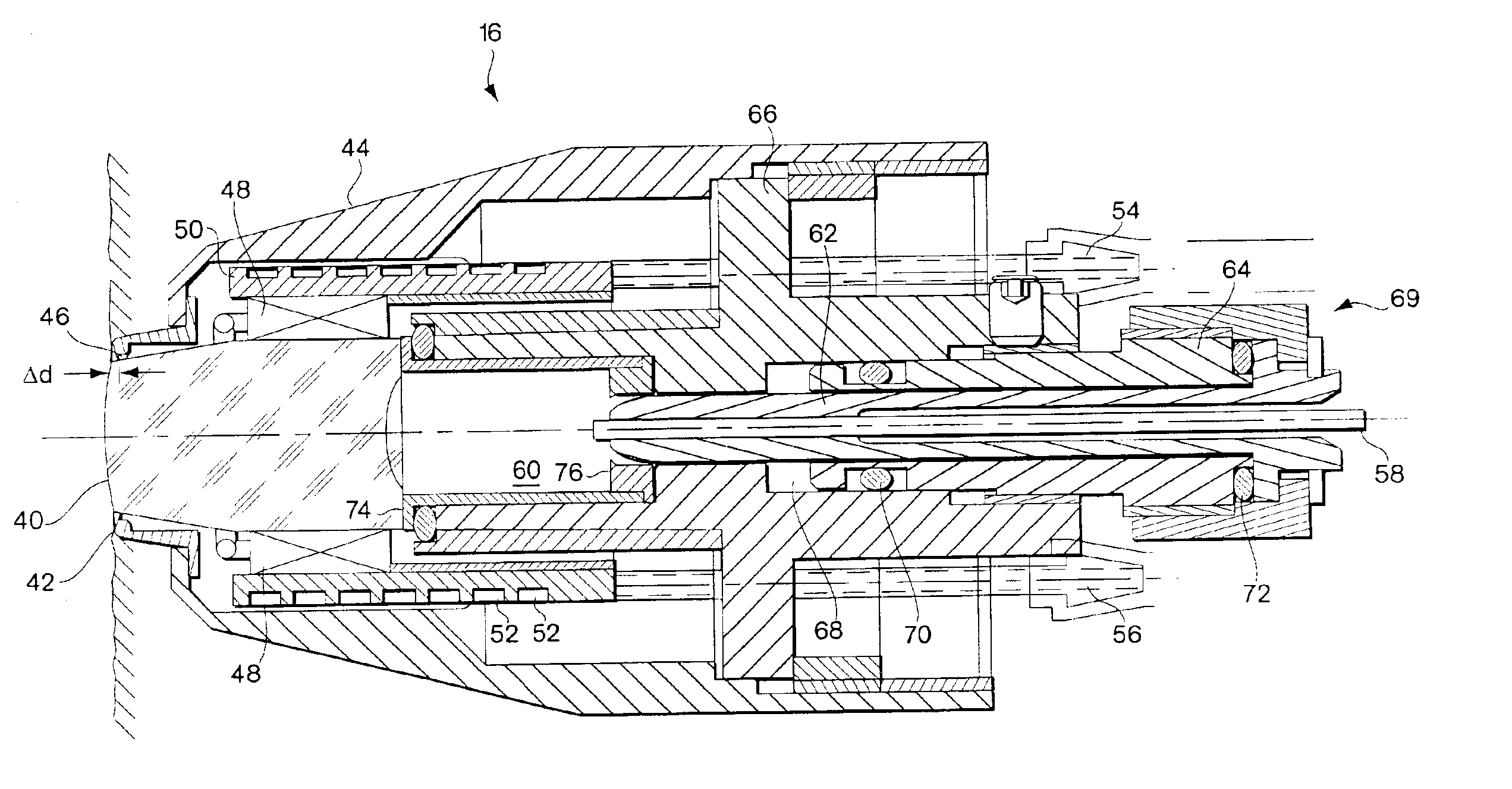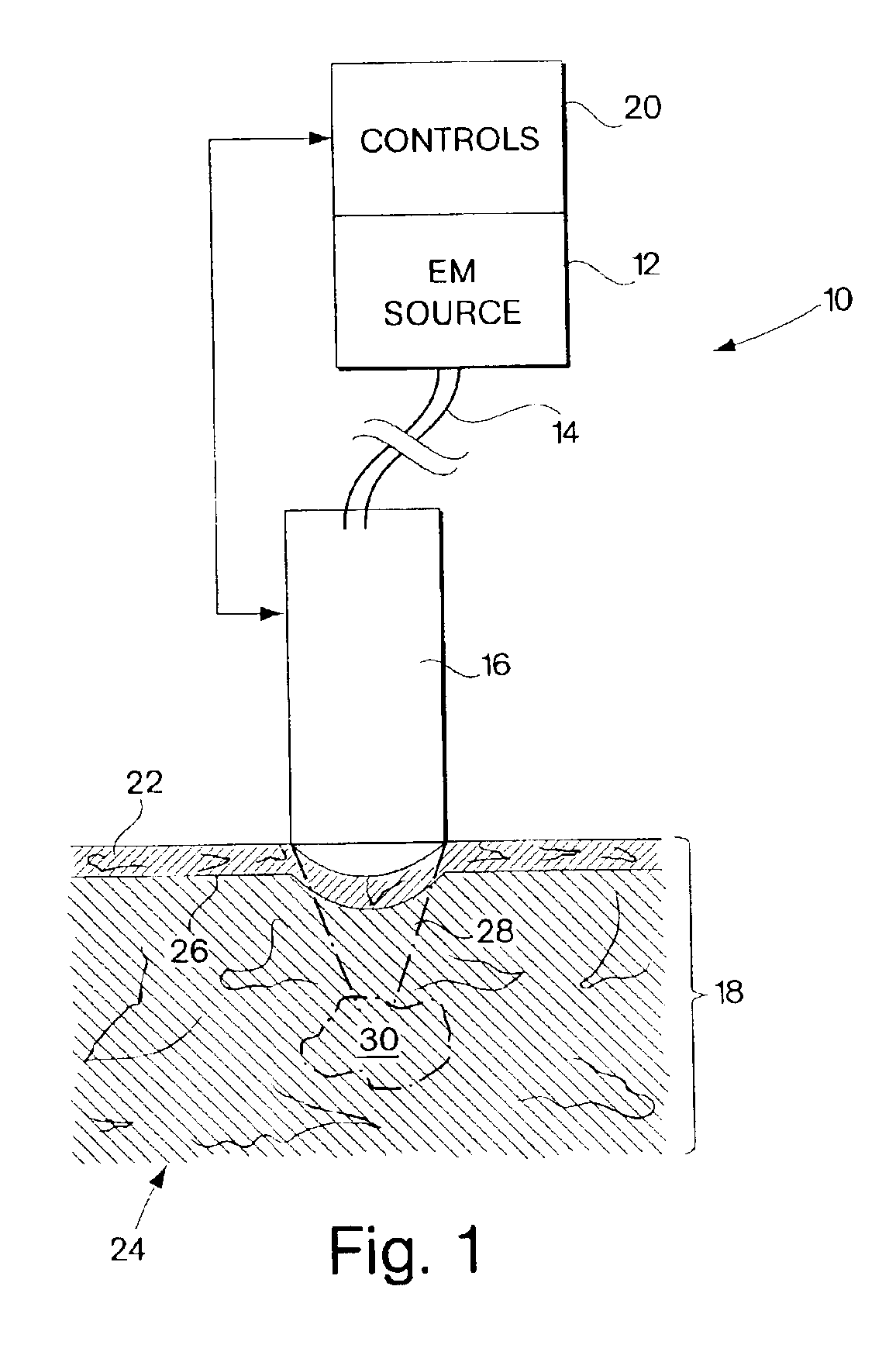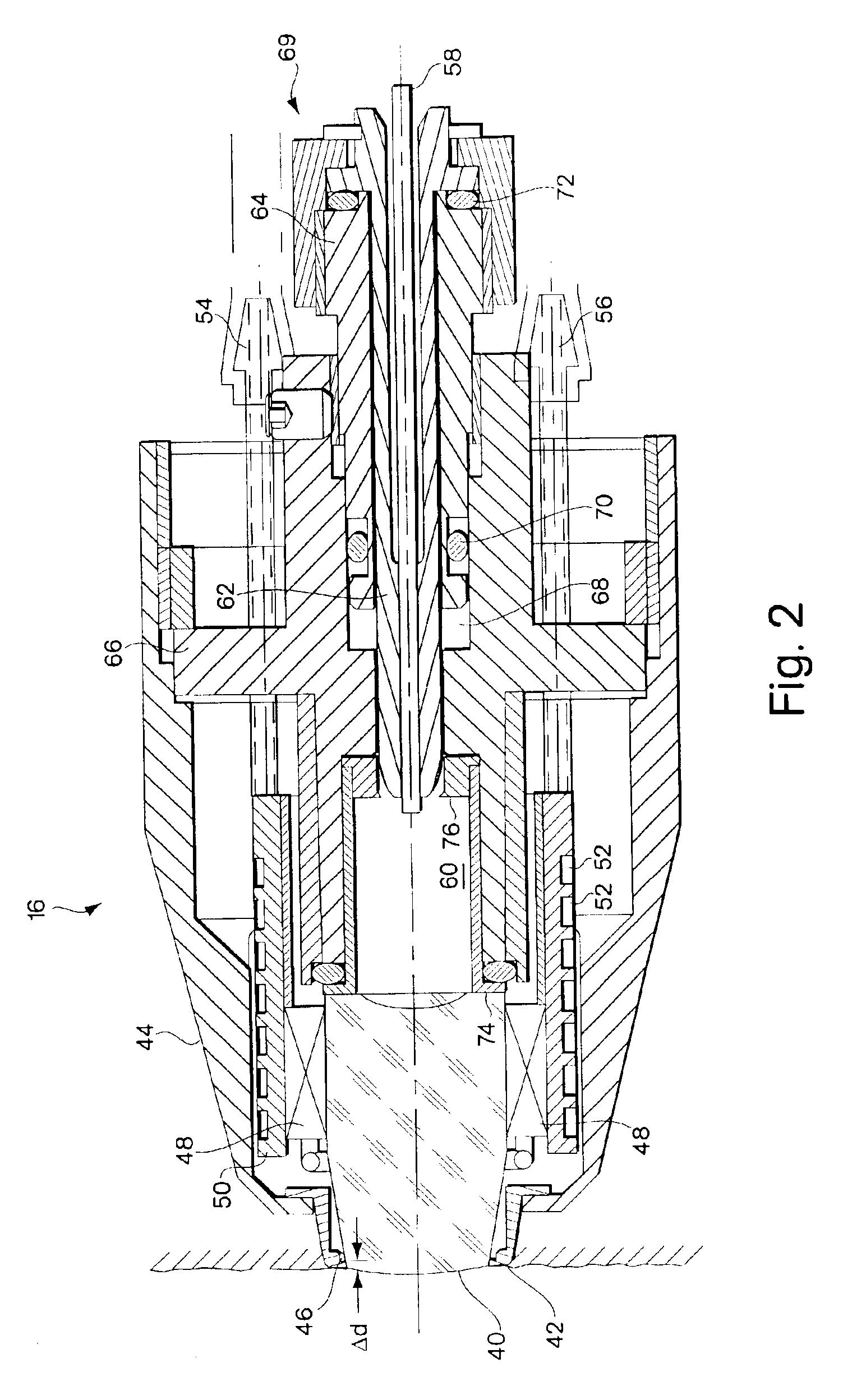System for electromagnetic radiation dermatology and head for use therewith
a dermatology and electromagnetic radiation technology, applied in the field of electromagnetic radiation, can solve the problems of increasing the energy absorption of the epidermis, the epidermis is susceptible to damage, and the energy can be used,
- Summary
- Abstract
- Description
- Claims
- Application Information
AI Technical Summary
Benefits of technology
Problems solved by technology
Method used
Image
Examples
Embodiment Construction
FIG. 1 is a simplified block diagram of a system 10 which may be utilized for treating a selected dermatological condition in accordance with the teachings of this invention. The system includes an electromagnetic (EM) radiation source 12 which is connected through a fiber optic light pipe or other suitable optical conveyor 14 to an applicator or head 16, which head is in contact with the skin 18 of a patient. Controls 20 are provided which receive information from source 12 and head 16 and which control operation of the system in response to these inputs and others. EM source 12 may be a ruby laser, alexandrite laser, diode laser or other laser source providing radiation of a suitable wavelength for the laser treatment to be performed, or may be a lamp or other non-coherent electromagnetic radiation source providing signals at the requisite wavelength. Particularly for non-coherent light sources, various techniques may be utilized to filter, frequency shift or otherwise control the...
PUM
 Login to View More
Login to View More Abstract
Description
Claims
Application Information
 Login to View More
Login to View More - R&D
- Intellectual Property
- Life Sciences
- Materials
- Tech Scout
- Unparalleled Data Quality
- Higher Quality Content
- 60% Fewer Hallucinations
Browse by: Latest US Patents, China's latest patents, Technical Efficacy Thesaurus, Application Domain, Technology Topic, Popular Technical Reports.
© 2025 PatSnap. All rights reserved.Legal|Privacy policy|Modern Slavery Act Transparency Statement|Sitemap|About US| Contact US: help@patsnap.com



